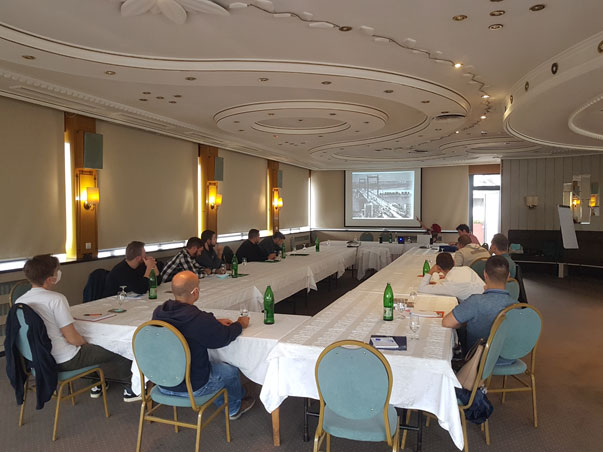|
School on revisionism
Within the
project "Legacy of Yugoslavia and
the Future of the Region", the
second school for doctoral students
"Emancipatory Potential of the SFR
Yugoslavia" was held
October, 2020

For the Yugoslav
peoples, second Yugoslavia was an
era of the greatest dynamics,
prosperity and modernization.
Socialist Yugoslavia and its
development differed from other
socialist countries, primarily
because of its openness to the
world. Socialist modernization
changed the general conditions for
most of Yugoslavia. Rapid industrial
development has led to a huge
movement of the population from the
countryside to the cities.
Compulsory, free education,
compulsory, free health care, gender
equality, cultural development,
media and infrastructure
construction are all significant
changes that have led to a change in
lifestyle and attitudes in society.
Topics covered at the school:
Stanislava
Vujnović:
(Anti)Emancipatory Discourses in
Yugoslav Children's Magazines (1918
- 1991)
Olga Manojlović:
Museum of African Art in Belgrade as
a Paradigm of Yugoslav Non-Alignment
Policy
The Bogdan Bogdanović’s Schools of
Architecture
Vera Gudac Dodić
Scope and Limitations of Women's
Emancipation in Socialist Yugoslavia
Private Spheres of a Woman's Life in
Socialism: The Case of Yugoslavia
Aleksandar Miletić
Yugoslavia as an Emancipatory
Project? Political and
Ethno-National Context
Yugoslavia as an Emancipatory
Project? Social, Economic and Gender
Context
Husnija Kamberović
National Affirmation in Socialist
Yugoslavia: Muslims from Religious
to National Community
Emancipation of BiH in Yugoslavia
Srdjan Milosević
The Political System of
Self-Governing Socialism: Ideas and
Reality of the Emancipation of the
Working Man
The Village in the Early Stages of
Socialist Development: Between
Emancipation and Repression
Milivoj Bešlin
Ideas and Contradictions of the
Yugoslav Model of Socialism
Serbian Liberals and the “Croatian
Spring”: A New Concept of Yugoslavia
Nenad Makuljević
Yugoslavia - A Space of Cultural and
Artistic Emancipation
Modernism as a Yugoslav Cultural and
Artistic Politics
Jovana Nedeljković
Construction of New Belgrade
Visit to the
Museum of Yugoslavia
Exhibition: Tanjug Reports: "The War
is Over", curator: Radovan Cukić.
Participants:
1. Admir Adrović,
Montenegro
2. Amar Šipković,
Bosnia and Herzegovina
3. Amel Durutlić,
Montenegro
4. Andrija
Jovanović, Serbia
5. Dino Šakanović,
Bosnia and Herzegovina
6. Edin Omerčić,
Bosnia and Herzegovina
7. Filip Kuzman,
Montenegro
8. Jasmin Salčin,
Bosnia and Herzegovina
9. Marino
Badurina, Croatia
10. Nebojša Đerić,
Serbia
11. Omer Merzić,
Bosnia and Herzegovina
12. Petar
Ranković, Serbia
13. Radomir
Đurović, Montenegro
14. Rastko
Stanojević, Serbia
15. Tamara
Bešević, Serbia
16. Vukašin Zorić,
Serbia
|